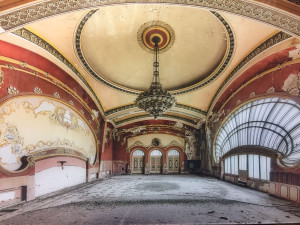Gregoire Cachemaille

Grégoire Cachemaille, nato in Svizzera nel 1978, si trasferisce a Berlino nel 2006. Sin da allora ama perdersi nella metropoli che lo ospita e che è diventata la sua città d’adozione.nScopre così che il vagare attraverso i molti spazi deserti del paesaggio urbano, assorbendo gli strati distintivi della storia recente della capitale tedesca diventano la sua principale passione alimentati della scoperta dell’inatteso.
Il suo lavoro mette in dubbio il valore patrimoniale di strutture abbandonate, non solo dal punto di vista architettonico, ma anche come testimonianza della storia delle comunità e dei poteri che li hanno eretti. Come reliquie cronologiche spogliate del loro scopo elementare, diventano oggetti di contemplazione e di introspezione. Nella sua fotografia c’è un forte contrasto tra sontuosità passata di luoghi che sono attualmente dimenticati, in disuso e talvolta in stato totalmente fatiscente.
Cachemaille racconta spesso che tutto ebbe inizio dopo aver trascorso una giornata intera esplorando un ex complesso militare sovietico nella periferia della città, era decisamente senza fiato. Sin da questa primissima esperienza, è stato catturato dalla strana e attraente bellezza di luoghi abbandonati in tutto il mondo.
Gregoire Cachemaille

After moving to Berlin in 2006 he made a habit of getting lost in the city and wandering through the many deserted spaces of the urban landscape, absorbing the distinctive layers of the city’s recent History. That’s when his passion for the forgotten and the derelict took shape. After he spent a full day exploring a former Soviet military complex in the city outskirts, he was definitely hooked. Ever since this experience, he has been capturing the strange but appealing beauty of abandoned locations around the world.
His work questions the patrimonial value of abandoned structures, not only from an architectural point of view, but also as witnesses of the history of the communities and powers that erected them. As chronological relics stripped of their elementary purpose, they become objects of contemplation and introspection.
